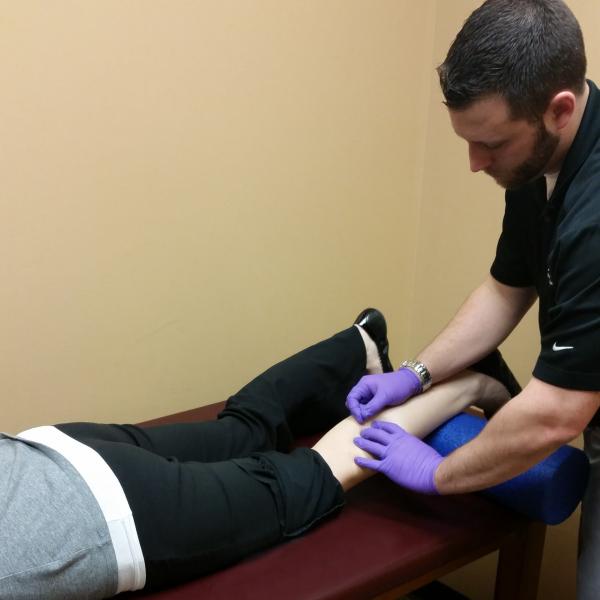Dry Needling and Physical Therapy: What’s the Point?

Contributions by: Andrew Grahovec and Megan Teeters, PT, DPT
Pain and tightness is a common ailment that many people suffer from. It can cause restrictions in your daily movements and activities, and worse, cause even more physical problems in the future. Living with pain and discomfort is never easy. Luckily, there are treatments available to you to have alleviate the pain at your nearest ATI Physical Therapy. One of the most recent practices that has grown in popularity is dry needling, and thanks to research, it plays an important role in relieving post-surgery pain.
How dry needling can help
Dry needling is a technique used by physical therapists to decrease myofascial adhesions and muscular pain. By inserting a solid filament needle into the muscle where a trigger point is located, it helps release that trigger point or adhesions, decreasing tightness and pain caused by the muscular restrictions. The goal is to restore normal and pain-free motion. The needle is inserted and positioned to get a twitch response, which causes the trigger point to release. Soreness and bruising may occur, but once those resolve, the muscle feels more relaxed and less pain is experienced.
Dry needling vs. acupuncture
Different than dry needling, acupuncture is an eastern medicine approach to overall health and prevention of disease. Needles are used to move energy “chi” to restore health, which is where the similarities begin to dissipate. Dry needling involves inserting needles into soft tissues with the aim of decreasing muscle tissue tension and improving musculoskeletal function, rather than acupuncture, which uses needles to manipulate the balance and flow of the body’s energy, producing its own pain-relieving endorphins.
Dry Needling Benefits
Outside of post-surgery care, dry needling physical therapy is also beneficial to many patients, including those with:
- Entrapment syndromes: Piriformis syndrome, thoracic outlet syndrome, pronator teres syndrome, cubital tunnel syndrome
- Sprain/strain injuries: Hamstring, adductor, cervical, thoracic, low back
- Tendinitis: Rotator cuff tendinitis, medial/lateral epicondylitis, bicipital tendinitis, trochanteric bursitis, iliotibial band syndrome, patellar tendinitis, achilles tendinitis, plantar fasciitis
- Frozen shoulder and other joint restrictions
- Chronic pain conditions: Complex regional pain syndrome [CRPS], fibromyalgia
- Chronic tension type headaches
- Compartment syndrome
Treatments vary in visits, but it can take as little as one treatment or multiple treatments to feel the difference. After dry needling, patients will focus on stretching and strengthening to help restore and maintain the lengthened muscle tissue, leading to a happier and healthier body.
Does ATI Physical Therapy offer dry needling treatment?
Dry needling is currently offered at select ATI Physical Therapy locations across our 850-plus clinics nationwide. To see if dry needling is available in your area, call your nearest ATI clinic for more information.
